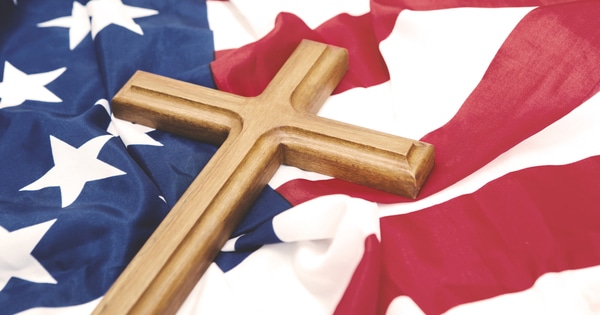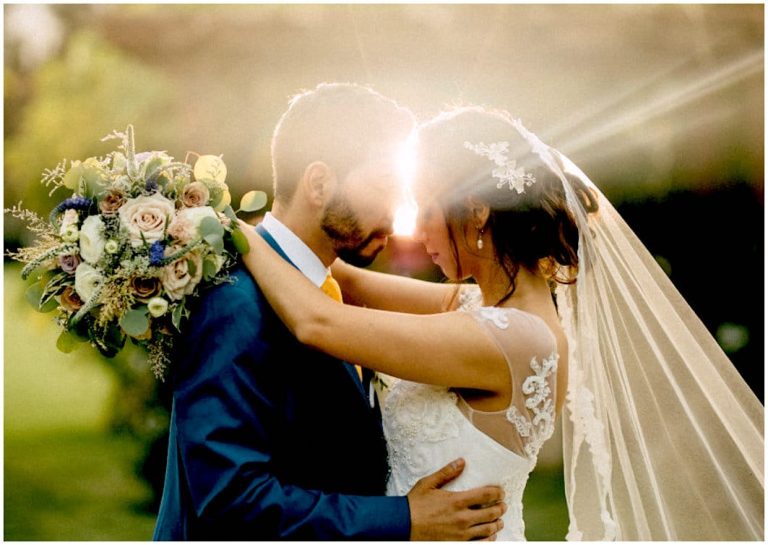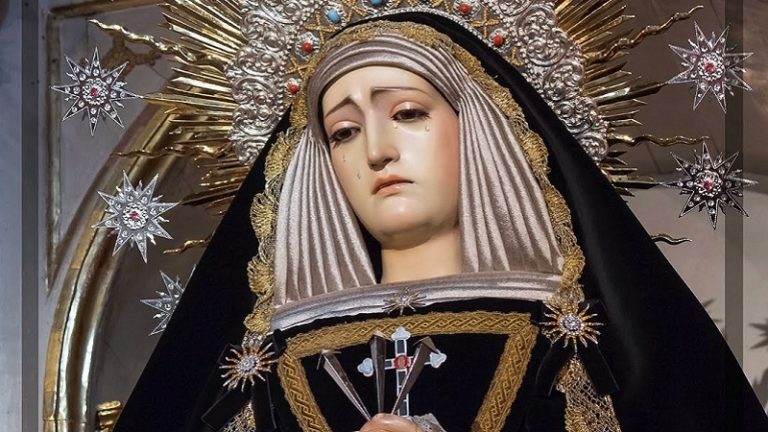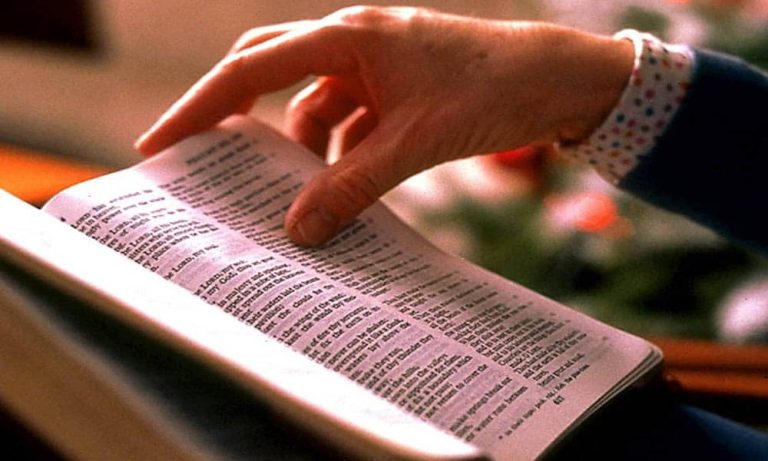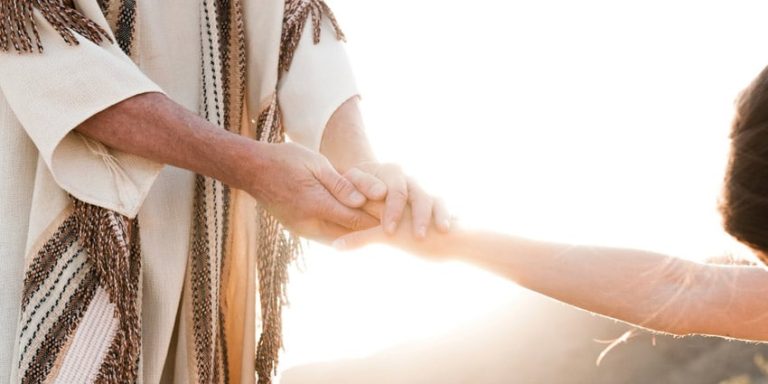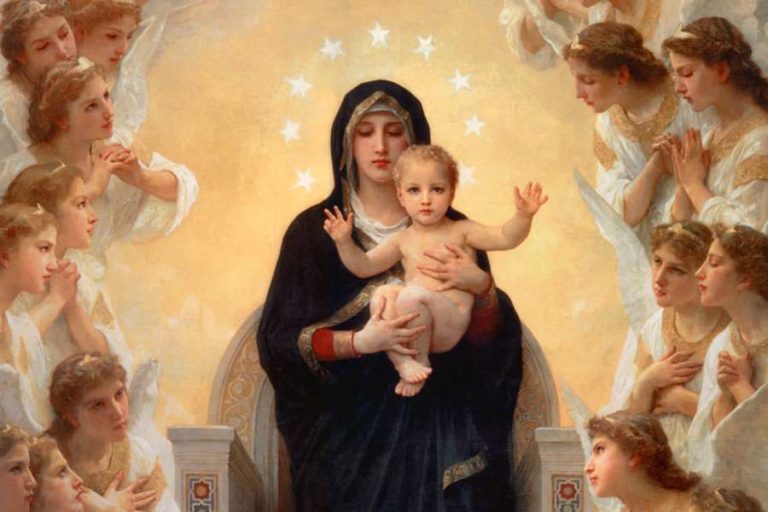The Religion of the United States, Know it
There are various religions throughout the world and each country has its own ideals, although it would be convenient if only one religion prevailed throughout the world, such as the doctrine of Christ. However, we will talk here about the religion of the United States and its spiritual beliefs.
History of religion in the United States
Knowledge regarding religious freedom in this country has played an important role in the history of the United States, just as it has happened in the same way throughout North America.
It is known that the first immigrants and settlers in the US were Europeans. It is said that many of them came to the country fleeing the type of religion of their countries as well as the type of beliefs that were imposed in a compulsory way, as is the case of the Roman Catholic Church and that of England.
Because of this annoyance that they felt in relation to the religious issue, the founders of American nationality thought of the possibility of organizing the country in a way that would guarantee them the division between state and church.
On this subject, it was officially guaranteed within the Constitution of the United States, in which the following is determined:
“Congress shall not determine laws in relation to the establishment of any religion, or that eliminates the free exercise of the same, or in its absence that affects freedom of expression or of the press, as well as the right of people to be able to meet in public. peacefully and request compensation from the government for grievances.”
This first amendment guaranteed and still remains in force the untouchable right that any citizen of the United States may or may not follow any form of religious belief or not, and thus allow practices in relation to their particular belief, as long as they do not affect the legal rights and civil rights of another citizen or law.
In this sense of the history of the United States, the union of Christianity over time has presented a majority of 900 denominations of faith. Such faith is the same in the great population of Americans.
The United States was characterized by being the first to be founded by Protestants, instead of Roman Catholics. According to these determinations, they place the spirit of America in the sense of the intention of wanting to participate with new ideas in terms of religion and challenge traditions.
Among other things that have appeared over time in the United States are fictitious experiments, not real, as well as religious fanaticism and the affirmation of religions of other countries such as Islam, Buddhism, Taoism. It can be said that this has turned out to be the roller coaster in terms of the advancement of religion in the United States of America.
From the beginning of colonialism, both British and German settlers came to the United States seeking religious freedom. The United States has always been very influenced when it comes to religion. Even that influence continues in the social and political aspect.
Some of the colonies that began in the origin were rooted by settlers who sought to practice their own belief without suffering any type of discrimination. Another fact is that the Bay Colony in Massachusetts was established by Congregationalists, Pennsylvania was established by British Quakers, Maryland by British Catholics, and Virginia by British Anglicans.
Native Americans and their religion
As the beginning of the religions of the United States that are known were of Native Americans. Throughout the country, beliefs existed regarding Indian tribes such as Sioux, Algonquians, and Iroquois. As for enjoying the gift of the Great Spirit, which gave them a spirit that was found in animals and idols that had no movement.
This type of religions practiced rituals characterized by being created and adorned, which were characterized by dances such as the snake, the ghost, the crow, the round as well as the sun dance.
Rituals are created and studied by one of the great leaders of various tribes such as Wovoka, Bigfoot, Black Elk and Sitting Bull.
As the colonists forced the natives to reservations in the west, the Christian missionaries tried to get into the spirituality, the devotion of religious practices and thoughts of the Indians, this was increasing and continues to characterize many groups today.
Religion and spiritual beliefs of the United States
As another curious fact and that serves for the information of the readers, it could be said that all the existing religions in the world in one way or another, are present in the United States of America.
As the three main ones we can determine as Judaism, Christianity and Islam, these are immersed in the country. Likewise, there is a predominance of Protestant groups, of various names, and Roman Catholics, which we will mention later.
However, we can determine that immigrants of Latin or Hispanic origin, predominates is the Catholic religion.
confession of faith
We cannot say that there are statistical numbers on the religious structure in the United States, since the census does not ask US citizens what religion they practice or their profession of faith.
In 2015, however, according to studies by the Pew Center regarding the religious issue in the United States, the profession of faith in this country is very varied and large.
70% of US citizens feel like being a Christian. Within this area, Protestant groups have an index of 46.5%, Catholics 20% and the remaining 3.5% are divided between Mormons, Orthodox, Jehovah’s Witnesses among other Christian practices.
Christianity in America
As we already mentioned, the dominant faith and religion in this country is Christianity, where the figure is seven out of ten citizens.
Other religions practiced in this country, according to surveys already determined later, are equivalent to: Buddhism 0.7%; Judaism 2%; Islamism 0.6%; Hinduism 0.4%; the so-called New Age 0.4%; and Native American 0.3%, apart from others that are also practiced.
According to researched data, the rate of citizens of the country, who claim not to be affiliated with any particular group or church, is calculated at 22%.
The United States has a religion characterized by a large number of beliefs as well as religious practices, due to the high level of fidelity. Due to the history of this country, although it has the characteristic of being short, compared to other countries, a diversity of religions have been born and others have disappeared over time.
As a country of multiple cultures in terms of people and immigrants who have ethnic origin, the United States has become the step of the greatest variety of religions worldwide.
We can even say and based on the census, the majority of the American people accept that religion is important in their daily lives, this being not very common in developing nations today.
In this article, the existing reports regarding the religion of the United States of America will be determined in a little more detail, including the historical and religious part of this country. As well as a brief summary of the different religions they practice.
We are also going to delve into the latest types of beliefs that exist regarding the religion of this country, as well as religious and spiritual ideas, and how they affect the daily life of the people of the United States.
Religious Fragmentation in America
During the 16th century, King Henry VIII of England founded the Church of England, also known as Anglican. This due to a lot of disagreements regarding the authority of the Pope of the Catholic Church.
Likewise, and in a subsequent way, other so-called Presbyterian-Reformed churches and European Free Church appear, this as a consequence of attempts made to liberate norms and notions established by the state Church.
All this diversity of Protestant churches was the reason for the beginning of Christian-type movements such as Puritanism. These Puritans transferred to the American colonies during the seventeenth century, a series of modifications that tried to purify the Anglican Church.
This Puritan movement would later branch out between Baptists and Congregationalists and would also initiate the so-called Methodists, Fundamentalists, Pentecostals and Adventists. Each different form of faith reduced its resemblance to the original Anglican Church.
The origins and ramification of the Evangelical Movement
From colonial times to the present, Evangelism plays an important role in the history of America. At this time the Puritans tried to spread the “Good News” through books of the same name, which were printed in Boston in 1683.
During the decade of the year 1740, a movement called the Great Awakening begins, characterized in that the Protestant evangelists transmitted word to the black citizens of the United States.
One of the most popular was the Methodists, who referred to a God in a close and personal way, not far away, as well as freedom from sins through conversion.
This type of dissemination of the message was done by campaigns of a spiritual nature characterized by songs, praises and preaching, during the 19th century. This message was transmitted to the border, holding meetings for those who lived there.
Protestant Denominations in the New America
Both Christianity and Protestantism spread rapidly throughout the entire country at the beginning of the six months of history. Through this, hundreds of denominations of Protestants were created during that time. Some have remained until today, while others have disappeared entirely.
As information for the reader, we are going to determine some of the Protestant religions that are practiced in the United States of America, namely:
Puritanism: the members of these colonies (puritans) made their arrival in New England in order to escape religious stalking. The faith of it is based on the wisdoms of John Calvin as well as the New Testament.
The number of these settlers increased to more than 100,000 people during the 18th century. Among other creations, the Puritans establish the first Harvard University in Cambridge, Massachusetts.
Methodism: the beginnings of this religious faith go back to a group of boys from the University of Oxford, guided by the brothers Juan and Carlos Wesley. Methodism had only 1,200 members at its inception; this was at the time evangelist Francis Asbury arrived in America in 1771.
The evangelist implemented the idea of celebrating the sense of reviving religious beliefs in the entire country, so at the time of his death in 1816, the Methodist Church increased to 214,000.
Lutheranism: This was considered the only Christian name in America, in which origin played an important role. The people who were included in this type of practice were only subjects who came from the United States, Sweden, Germany, Denmark, Norway and Finland.
These were established in the east and west and the rituals were celebrated in native languages. During the 19th century, they begin to give in their norms, not being so drastic since the American process removed the impediments of the languages, which had been the cause of previous separation.
Lutheran groups came together and formed the Evangelical Lutheran Church of America. Today there is a figure higher than half of the Lutheran membership in the United States of America.
Presbyterianism: Presbyterian practices churches share the idea of common origin in the knowledge of John Calvin and the Swiss Reformation in the sixteenth century. These beliefs of the Presbyterian Church do not have much similarity in terms of the liturgy of the Catholic Church, neither in organization nor in rituals.
Presbyterianism is based on a style of active leadership by church members. Presbyterians have their origin in England, Ireland, Scotland; since they came from these cities.
As for their beliefs and rituals, they are entrenched in relation to the Bible and the majesty of God and their performance is with a council made up of elders, who are known as “presbyters”.
These usually work in conjunction with the ministers belonging to the congregation. Presbyterians are considered to be one of the largest branches of Protestant Christianity today.
Quakers: this religion was founded in 1647 by the English George Fox. The members of this congregation are called “Society of Friends” in it they emphasize to the members the direct relationship that exists with God, as the main root of belief.
The belief of this religion is fundamentally based on the writings of William Penn. Penn’s writings on freedom of conscience are helpful as the basis for understanding the Quaker religion in the world.
In another order of ideas Penn and the church established something called Pennsylvania, which was nothing more than a sanctuary of religion in the United States, all of which happened at the end of the 17th century.
There were other Christian characterizations that left their mark on the history of religion in the United States. These early protest confessions were instrumental in aiding the United States and guaranteeing the freedom of religion that the United States practices today.
Breakdown of religious denominations
In a Pew Forum survey of religion and public life, a number of changes are taking place in the religious scene in the United States. This is based on confessions made to some 35,000 US citizens over 18 years of age.
This survey of the Religious Landscape of the United States has the characteristic of being diverse and very broad.
We are going to determine some statistics from the survey in question below, but first we will do a detailed report on the main religions in the United States.
main religious traditions
Of all US citizens, 78.4 percent describe themselves as Christian. This occurs within the Christian faith itself, there are several denominations which we will point out below together with the percentage of US citizens who are attached to them, namely:
Protestantism: 51.3%
Evangelical Churches: 26.3%
Major Churches: 18.1%
Historical black churches: 6.9%
Catholicism: 23.9%
Mormonism: 1.7%
Jehovah’s Witnesses: 0.7%
Orthodox: 0.6%
Apart from these religions, people in the United States also adhere to other religions, many of which are not Christian, among which there is a percentage of 4.7%; as well as others do not present any belief or affiliation, representing 16.1%.
In the same way, we will present some percentages regarding this other rate of US citizens, namely:
Others (non-Christian religions) 4.7%
Jewish: 1.7%
Buddhist: 0.7%
Muslim: 0.6%
Hindu: 0.4%
Other religions: 1.2%
Unitary: 0.7%
New Age: 0.4%
Native American: 0.3%
Unaffiliated (no religion) 16.1%
Atheist 1.6%
Agnostic 2.6%
Nothing in particular 12.1%
Does not know or does not respond 0.8%
In the previous table, the Christian faith can be determined in its different thoughts and versions; these beliefs many times outnumber other religions in the United States of America, where 80% of citizens identify as being Christian.
In contrast we can say that Protestantism is the largest religion group in the United States of America, this represents a number of 50% of people with religious beliefs.
About this we must say that none of the religions or groups determined here have the high rate of followers such as the Catholic Church which is 24%, it is the version of Christianity that most common exists in the United States.
Likewise, these numbers determine the percentage of people who do not have any religion, which is 16.1%; however, 2.6% of this remaining percentage is divided between agnostics and atheists with 1.6%.
religious trends
Also statistics recently, more than 25% of US citizens have moved away from the faith, which was practiced by some of them since childhood in favor of another belief or religion.
According to other denominations, 44% of adults in the United States have changed their religious beliefs. These beliefs seem to return to the first ones that originated when the first settlers, Protestantism came together in one way or another and people tended to disassociate themselves from the initial religion, with the sole reason of seeking the faith that would make them feel good. spiritually.
political influence
In this aspect, some politicians very often talk about the issue of religion during the electoral campaign, several churches as religious figures are usually active in the political part.
On the other hand, due to the tax-exempt status, there should be no support for any candidate in any form or official. There are some Christians in the Democratic Party and in the Republican Party, however evangelicals tend to support the Republican side.
The presidents who have passed through the United States have had the particularity of being white and Protestant, with the exception of Thomas Jefferson (deist); John F. Kennedy (Catholic) and Barack Obama (African American).
Other data of interest
In the United States, most of the inhabitants think and maintain that religion is an important part of their daily lives. The vast majority identify themselves as Christians and approximately 20% have no religion.
In relation to the studies of the American Religious Identification Survey (ARIS), during the year 2008, they felt affinity with the Christian religion (76%); these attended various Protestant churches and the other 25% said they practiced Catholicism.
The same studies indicate that over 4% of the inhabitants profess religions such as Judaism, Buddhism, Islam and Hinduism; Likewise, 15% of the adult population do not have any religion, and the other 5.2% are not clear about what they express.
According to another 2012 survey, Americans attend church at least once a week. This percentage of citizens covers 36%.
In relation to the American Association of Religious Bodies Statistics during the year 2012, he pointed out that if 70% of US citizens say they are believers in Christianity, it is no less true that the second variable and practiced religion is according to the State.
The second largest religion in the country in the 20 states such as those in the center and the south is usually divided as follows: Judaism prevails in 15 states; mostly on the Atlantic coast, Buddhism is often the second largest community of religions; in 13 states of the country such as: Hawaii and Alaska.
Of these two states, the one with the largest number of Buddhists has 9% is Hawaii. In contrast, Hinduism is the second largest religion in Arizona and Delaware, and Behaism is the second largest religious motif in South Carolina
Likewise, the number of citizens who admit not having a specific religion is double that of those who claim not to be affiliated with any special religion, especially children.
Americans between the ages of 18 and 29 say they do not adhere to any specific religion. These are equivalent to 25%.
As for these figures, it is unquestionable to determine the importance of religion in the lives of some members of the American people. This decreases as they move into adulthood.
In younger adults, religion plays an important role in their lives, however, this is decreasing as time goes by.
As in all developed countries today there are religious groups in the United States. These are called “unaffiliated”, there are also people who are atheists or who have no belief at all.
On the other hand, one of the churches that is having a decrease in terms of its members is the Roman Catholic Church. Surveys show us that for every three children who practiced the Catholic religion as children, currently less than a quarter say they are Catholic.
Scholars on the matter think that this type of loss in terms of Catholic or religious faith would have been higher were it not for the reason for immigration, which existed towards Mexico and other South American countries; in which Catholicism represents the main religion.
As a point of conclusion that we think is important, the surveys that we have mentioned before, determine that some smaller forms of religion, found in the United States, present the characteristic of being disintegrated.
In relation to this, the Jewish religion represents 1.7% of the population; in turn it is subdivided into three groups such as: Reformed, Orthodox and Conservative Judaism. In the same way, the Buddhist religion represents 07% of the citizens, these belong to three groups such as: Zen, Tibetan Buddhists or Theravada.
There is also the Islam religion that represents 0.6% of the adult citizens of the United States; it is equally divided into two main groups: Shia Muslims or Sunnis.
In relation to this subdivision, religion in this country becomes competitive, in relation to the fact that all religious groups constantly win and lose members in each one. Studies indicate that these groups gain members and also lose them at a minority rate, however the groups that decrease are of opposite thoughts.
It may be alarming for some religious groups, the rapid growth of people who are not affiliated. The effect on the future of religion in the United States is not yet known for sure.
This downward trend could continue in terms of religious groups and the growth of citizens who are not affiliated, figures that may continue this trend for longer.
conclusion
We have tried to give the reader a general opinion of the different religious beliefs that exist in the United States of America. In this article we have been able to observe the diversity of them in terms of the different thoughts of Americans.
However, there is a high percentage that practices Christianity or the Catholic religion; and other percentage number do practices like Islam, Judaism, Buddhism, Hinduism, etc.
As we can see, there is a diversity of religions and ways of thinking in the northern country. Likewise, according to studies, some people are of the opinion that the United States of America is the only country that has the characteristic that all the religions that exist in the world are agglomerated in one place.
However, as we mentioned in previous paragraphs, there are different ways of thinking among the North American people regarding religious ideology, however a high percentage practices the Catholic religion, attending churches at least once a week.

Hello! Let me enthusiastically introduce myself as a dedicated blogger fueled by an intense passion for meticulously crafting insightful and well-researched blogs. My mission revolves around providing you, dear readers, with a veritable treasure trove of invaluable information.

